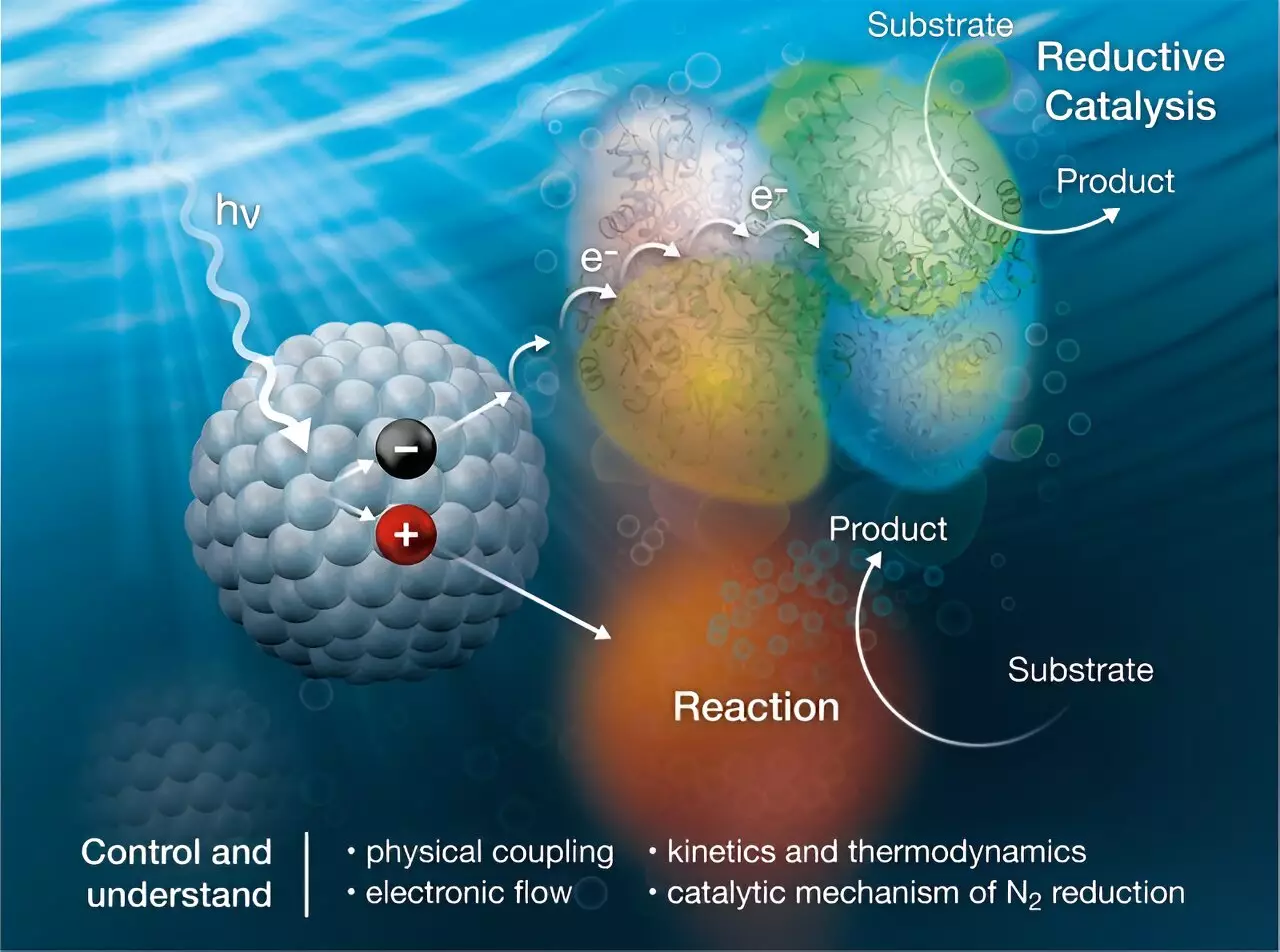Ammonia production plays a crucial role in agriculture by providing the necessary fertilizer for crops to grow. However, the traditional methods of producing ammonia come with significant drawbacks, such as high energy consumption and greenhouse gas emissions. In a groundbreaking study published in the Journal of the American Chemical Society, researchers have developed a novel biohybrid approach that utilizes sunlight to drive the conversion of nitrogen to ammonia without the generation of harmful greenhouse gases.
The key to this innovative approach lies in the coupling of nanocrystals to the nitrogenase enzyme. Nitrogenase is a natural enzyme that can catalyze the conversion of nitrogen to ammonia, but it requires the energy stored in adenosine triphosphate (ATP) to drive the reaction. By linking nanocrystals to the nitrogenase enzyme, researchers have found a way to harness sunlight energy to transfer charge to the enzyme and facilitate the ammonia production process. This unique biohybrid system not only reduces energy consumption but also eliminates the production of greenhouse gases associated with traditional methods.
The current standard method of producing ammonia, known as the Haber-Bosch process, is energy-intensive and generates a significant amount of carbon dioxide emissions. In contrast, the new sunlight-based process offers a more sustainable alternative by using renewable energy sources to drive the reaction. By catalyzing the production of ammonia closer to where it will be used, this method also reduces the carbon footprint associated with shipping ammonia fertilizers to farms.
Moving forward, researchers aim to further optimize the biohybrid system composed of nanocrystals and nitrogenase to enhance its efficiency and stability. By studying how nanocrystals can bind to the enzyme and transfer charge selectively, scientists can fine-tune the process of converting nitrogen to ammonia using sunlight energy. This progress opens up new possibilities for studying the detailed mechanisms of ammonia production and identifying ways to reduce energy consumption and greenhouse gas emissions in agriculture.
The development of a sunlight-based approach to ammonia production represents a significant step towards more sustainable farming practices. By harnessing renewable energy sources and innovative biohybrid systems, researchers have the potential to revolutionize the way ammonia is produced and utilized in agriculture. As we continue to explore the possibilities of sunlight-driven reactions, we may unlock new pathways towards a greener and more environmentally-friendly future for farming.


Leave a Reply